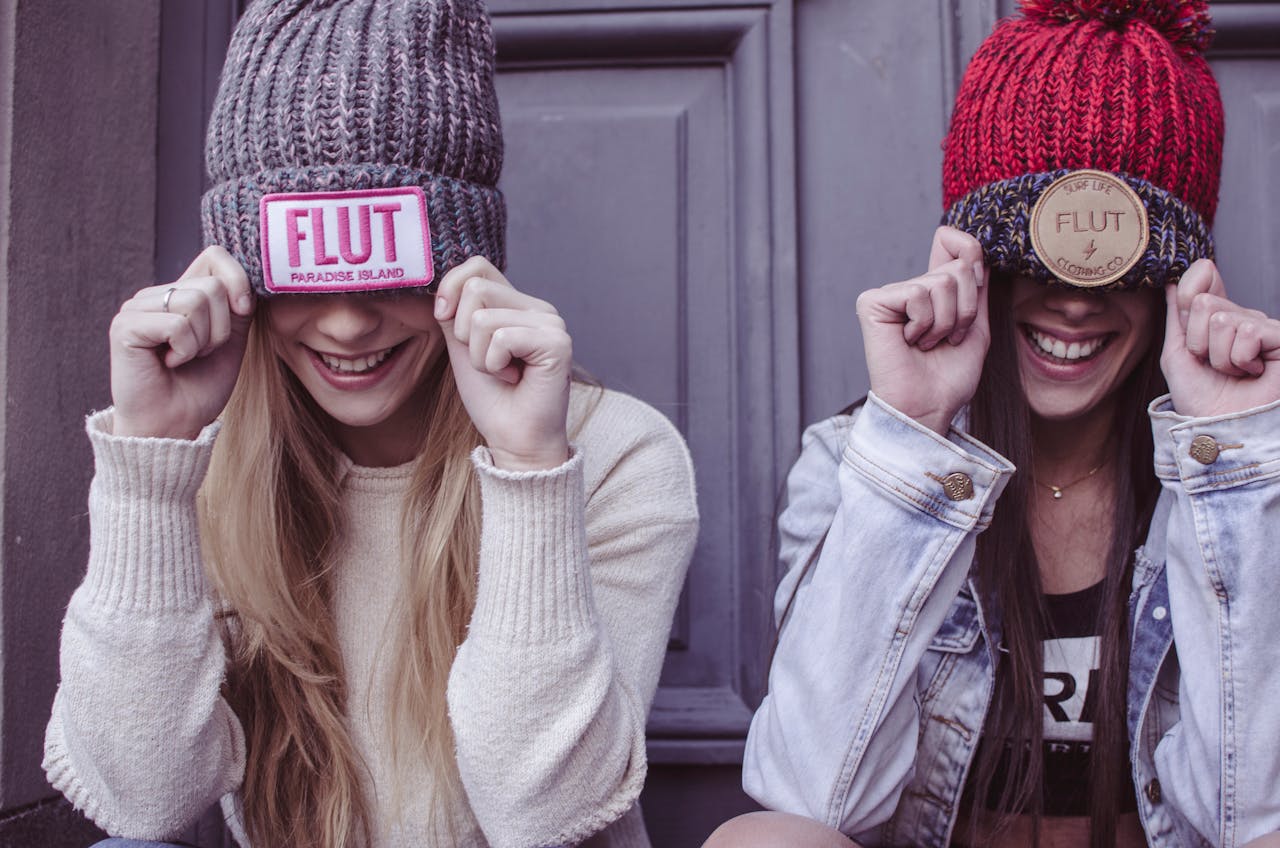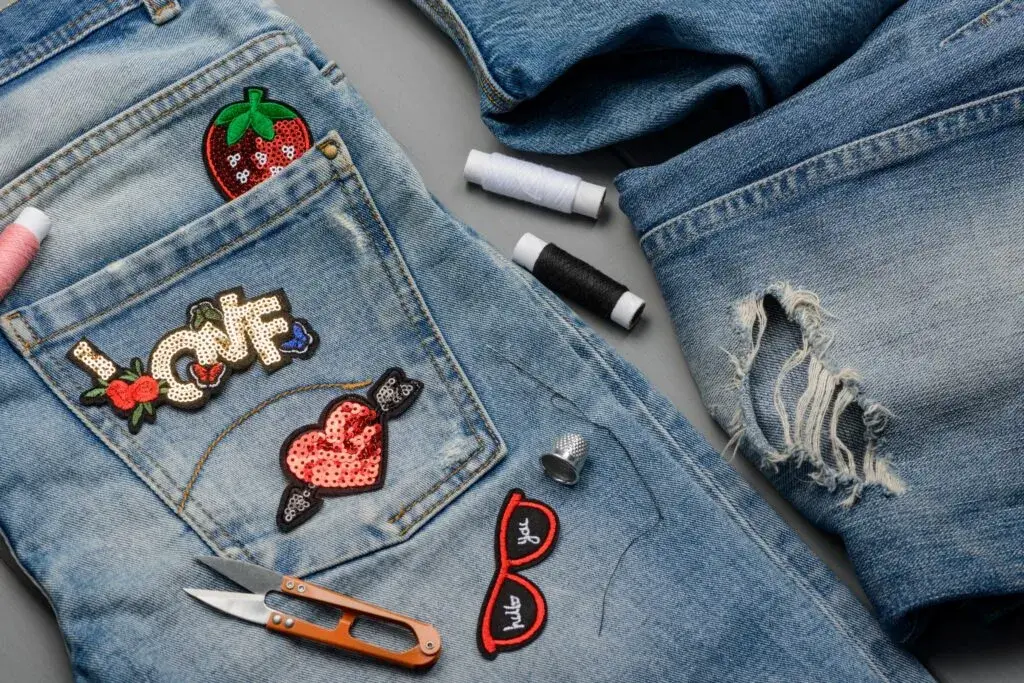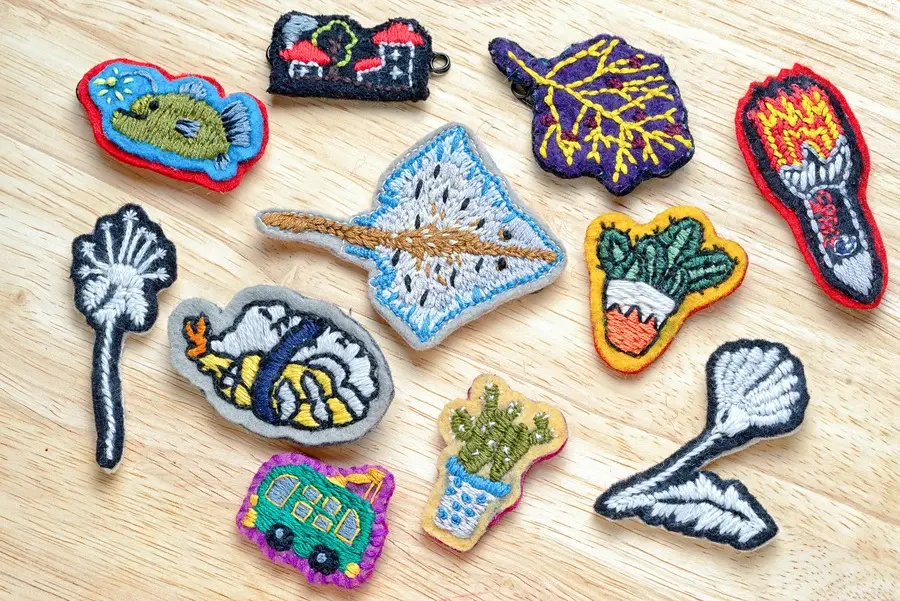What’s the Best Fabric to Use for Embroidering Patches?
Fabric is the foundation of any sewing project, especially when creating embroidered patches. Choosing the right fabric can elevate your garment, while the wrong choice might compromise your design.
When it comes to hand or machine embroidery for patches, selecting the ideal fabric can feel overwhelming. The right fabric ensures a smooth embroidery process and helps you achieve the perfect look for your design. On the other hand, using an unsuitable fabric can lead to disappointing results and a less polished finish.
In this guide, we’ll explore the key factors to consider when selecting fabric for embroidered patches and highlight the best fabric options to bring your designs to life.
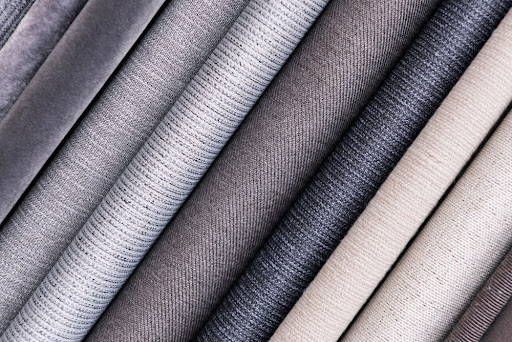
Factors to Consider When Selecting Fabric for Embroidered Patches
Choosing the right fabric for your embroidery patch is crucial for a long-lasting and visually appealing design. Opt for durable materials that can withstand the wear and tear of daily use, while remaining flexible and comfortable
1. Type of Garment the Patch Will Be Applied To
The garment plays a significant role in the type of fabric you choose for your embroidered patch. Ideally, you want a garment where there is a flat and smooth surface to attach the embroidered patch. For example, most shirts are made of a form of cotton or polyester, which doesn’t wrinkle easily and can withstand ironing. Thicker garments like a coat, denim jacket, or leather bag require a more hefty fabric.
2. Intended Use of Garment
Your embroidery patch and fabric must be able to withstand their intended use. Coats, bags, and jackets are durable and can withstand heavy-duty fabrics. However, more delicate clothing like shirts and skirts requires more lightweight fabrics.
3. The Weight of the Thread and Garment
The chosen fabric must support the width and weight of your thread. When selecting a fabric, it shouldn’t allow the thread to be visible in the front of your garment unless you want that deliberate effect. A heavy thread can cause a fragile fabric to dominate the piece, while a delicate thread can get lost in a heavy fabric. Furthermore, you’ll want to avoid choosing stretchy fabrics that distort your design.
Next, consider the weight of your garment as a whole. The fabric should support the overall weight of your garment. For example, if you’re adding extraneous elements such as beading, bows, and buttons, you’ll want a more robust fabric that holds its shape well. A lightweight fabric can easily pull and stretch with heavy yarn, while a heavier-weight fabric would be needed for hefty stitching mediums. Fabrics that are heavily embellished or woven are less practical for embroidery patches.
4. Design and Complexity of the Patch
Determine the finish of your sewing project. How would you like it to be presented? The finish is vital to your fabric choice since the background impacts the feel of the project.
Look at the fabric choices and get a feel for the finishes that match your design. A shiny fabric produces a more polished appearance, creating a bigger contrast between the background and the patch. However, a matte fabric has a non-reflective surface, which is ideal for a busy embroidery piece.
Patterned fabrics may conflict with your embroidery design, so be mindful and look to more natural tones.
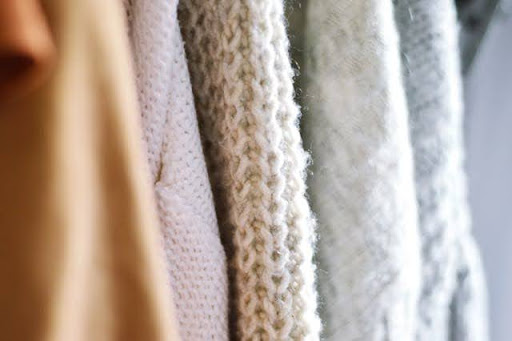
Popular Fabrics for Embroidered Patches
Let’s go over some of the most popular fabrics for a professional-looking patch, as well as the benefits of each one.
1. Acetate
Acetate is a beautiful, lightweight fabric that can be cut and sewn. It contains natural fibers that don’t shrink, fray, or stretch, and it’s known for its durability and resistance to mold.
Acetate has been used within the apparel industry for decades due to its softness and versatility. It can be easily embroidered, printed, or dyed with any type of thread-making, making it suitable for machine embroidery patches. We’re big fans!
2. Cotton
The most preferred fabric is cotton, due to its lightweight and soft characteristics. Additionally, it features breathable, natural fibers, ensuring it doesn’t restrict airflow in your garment. However, there’s a downside: it can shrink when washed or when the wrong care instructions are followed. Happens to the best of us!
3. Wool
While there are many fabric types for embroidery patches, wool is incredibly versatile and comfortable. It’s a natural fiber that won’t stretch or shrink over time, even after many washes. Wool also has a lustrous sheen, beautiful draft, and soft feel.
4. Polyester
Polyester is an excellent choice for machine-embroidered patches since it can be easily cut and sewn. It’s available in many patterns and colors and is not very bulky – ideal for creating small patches.
Polyester has a soft, unique, and flexible feel. This fabric is easy to work with and pre-shrunk, so you won’t have trouble stitching or ironing your patch onto your garment.
5. Polyurethane
Polyurethane is a form of polymer created from petroleum and other materials. Although it has many uses in the textile industry, it’s often used to make long-lasting and durable patches. Polyurethane offers a smooth finish that won’t snag easily when being sewn onto another cloth or pulled on by the needle.
6. Silk
Silk is a smooth, woven fabric constructed from protein fibroin. The fibers are long and have a glossy appearance that creates a silky effect. It’s one of the best fabrics for embroidering patches due to its high strength and easy-to-work-with nature. We love silk at THE/STUDIO !
Additionally, it’s durable, soft, and won’t fray easily. This beautiful material resists shrinking, stretching, fading, or wrinkles and won’t require special care instructions.
Tips for Working with Different Fabrics
Choosing the right fabric is crucial for showcasing your stunning embroidery and ensuring your design stands out beautifully. The wrong fabric, however, can lead to puckering, stretching, or distortion, ultimately compromising the patch. Explore these tips to learn how to select and work with various fabrics effectively.
a. Adjust to the Embroidery Setting on Sewing Machine
The embroidery setting on sewing machines is designed for machine embroidery. It works by using hoops that attach to the device and embroiders the design for you. This setting can easily sew through a variety of textiles without a problem. It’s foolproof!
b. Test a Small Piece of Fabric Beforehand
The best way to select a fabric is to choose a few samples that match your ideas. Then, perform some stitching to see which looks best for your project. The more textiles you try, the more expertise you’ll gain about the best fabrics for your garment. After testing out fabrics, you may intuitively know which fabric is the right one – or ask a trusted friend!
Additionally, you’ll want to test the fabric stretch. Each fabric has different elasticity, meaning you must see whether the embroidery patch doesn’t stretch or contract when stitched on the garment. When choosing a fabric, it’s vital to check that the embroidery patch works with it since it can change how the final product fits onto your body.
c. Test Unwanted Patches on Fabric Beforehand
The last thing you want is to have fabrics that ruin the look or feel of the patch. What a drag! It’s best to stick unwanted patches onto a fabric to see how well it sticks and whether it will fray or snag. Sometimes, after attaching the patch, you might find the patch to be an eye sore or not durable if not to hold up your hefty patch.
d. When In Doubt, Consider Hand-Sewing
If you’re unsure about the settings to use for machine sewing or don’t have a machine, you can always hand-sew your fabrics. Some fabrics are simply better sewn by hand! If they’re prone to excessive bunching or fraying, stretching, or warping, it’s a good idea to spare yourself the hassle of continually adjusting the fabric on your sewing machine. Stitching the fabric by hand would probably give a better result and reduce stress !
Buying a sewing machine can cost several hundred dollars to thousands of dollars. If you’re not an avid sewer, you likely don’t have a machine on hand. Instead, all you need is a pack of needles, some thread, and a pair of scissors to get started.
Final Thoughts
Embroidery patches are a great way to promote or advertise a business, organization, or cause and are best to have on shirts, uniforms, bags, and more. When choosing your ideal fabric, look for factors such as durability, weight, and intended garment use.
Whether you want to promote your company or customize your wardrobe, THE/STUDIO offers a wide range of options to build your embroidered patches collection. You have plenty of customization options where you can choose the patch material, patch backing, thread type, and more. Get started and create your custom patches today!
Frequently Asked Questions
Below are the most commonly asked questions for finding the best fabric for embroidery patches.
What are the most popular fabrics for embroidered patches?
The most popular fabrics for embroidered patches include cotton, acetate, polyester, silk, wool, and polyurethane. Among these, cotton is the top choice due to its ease of use, softness, and lightweight nature, making it ideal for a variety of patch designs.
Can I use any fabric for embroidered patches, or are there certain fabrics that work better?
While many fabrics can be used, certain types are better suited for embroidered patches. Look for fabrics with a smooth surface, minimal fuzz, and a high thread count that hold their shape well. Cotton, polyester, and other synthetic fabrics are often ideal choices.unt and hold their shape. This includes cotton, polyester, and synthetic fabrics.
How do I choose the right fabric for my patch design and intended use?
Consider the patch’s design, weight, and durability along with the intended use or garment. Heavier garments or patches with intricate designs typically require more durable fabrics. For lighter, simpler designs, soft and flexible materials like cotton are ideal.
Are there any special techniques or settings to consider when embroidering different fabrics?
Yes, different fabrics require specific approaches:
- Heat-tolerant fabrics like cotton or denim work well with ironing techniques.
- Synthetic fabrics that cannot withstand high heat may need fabric adhesives or sewing methods.
Adjust your technique based on the fabric’s properties to ensure durability and visual appeal.
Can I test a small piece of fabric before embroidering the full patch?
Absolutely! Testing a small piece of fabric with your intended design and threads is a great way to ensure the material is suitable. This allows you to check how the fabric holds up and make adjustments if needed before committing to the full patch.

